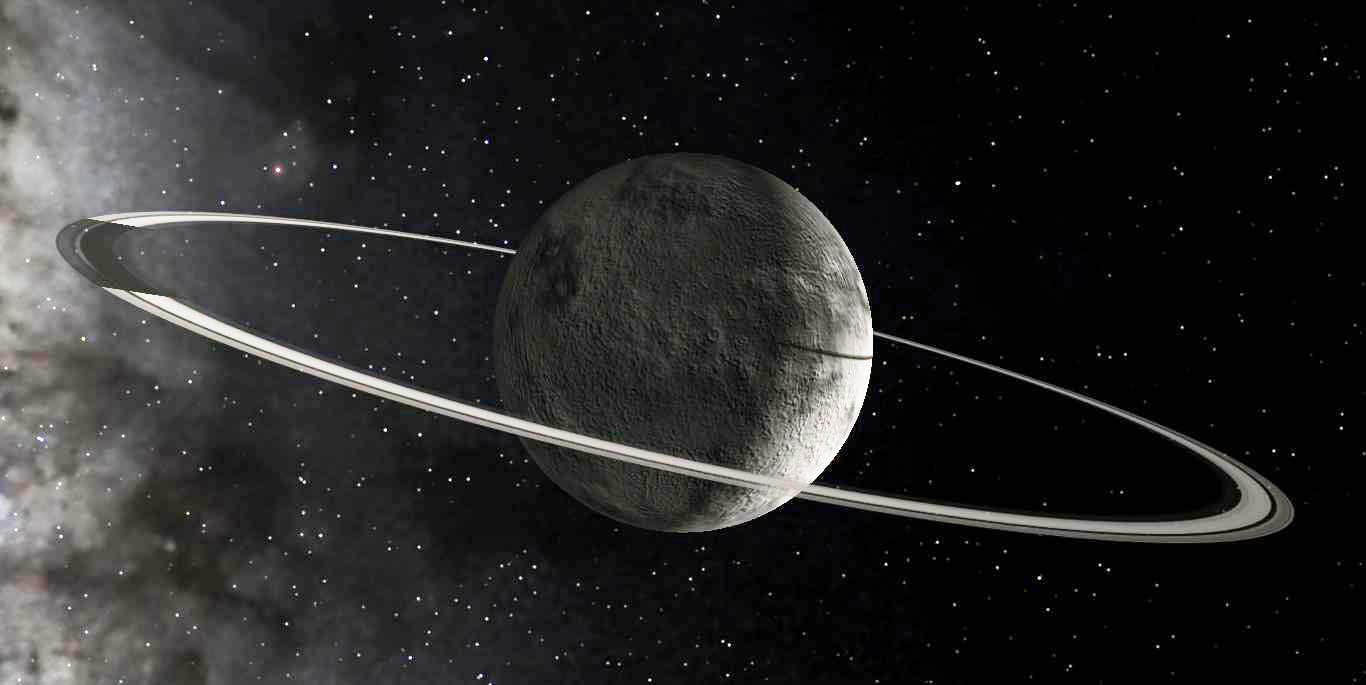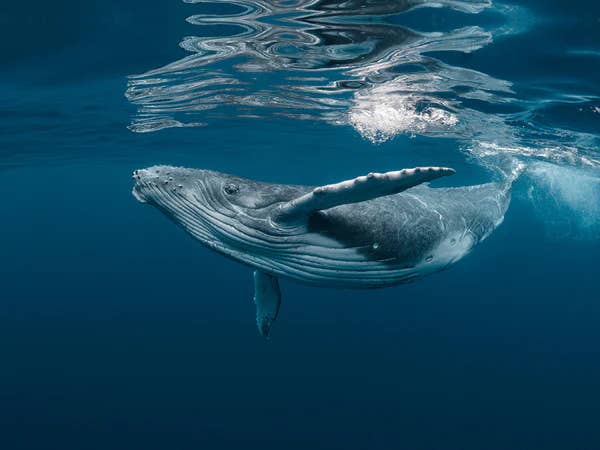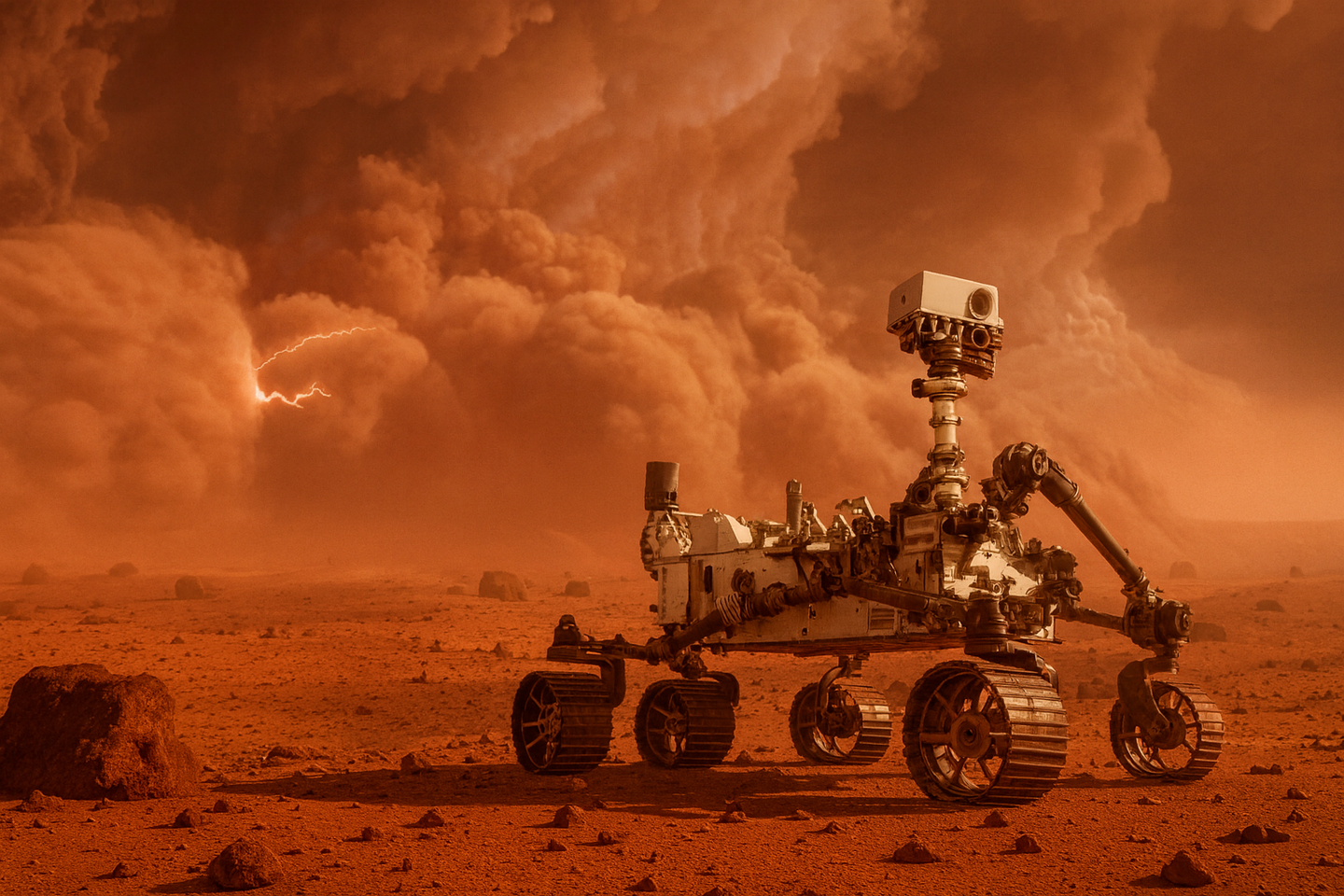Astronomers discover an evolving ring system forming around Chiron
Astronomers uncover a dynamic ring system around Chiron, revealing how small icy bodies can host evolving planetary-like structures.

AI generated: Centaur/comet/asteroid/dwarf planet candidate 2060 Chiron with rings as rendered in Celestia. (CREDIT: Wikimedia / CC BY-SA 4.0)
For decades, astronomers have been awed by Saturn's ring beauty. But a tiny, icy wanderer drifting between Saturn and Uranus has now stolen a little of that spotlight.
A new paper released in The Astrophysical Journal Letters reports that Chiron, a 200-kilometer-wide centaur object, has its own system of complex rings and a huge equatorial disk of dust and ice. The finding offers the best view to date of this distant mysterious world and sheds light on how ring systems are created and evolve even around small objects.
Taking the Shadow of a Distant World
The discovery was the result of a rare celestial event known as a stellar occultation, when Chiron crossed in front of a far-off star for a fleeting moment on September 10, 2023. Telescopes throughout South America—from Brazil to Argentina—recorded tiny dips in starlight as the light from the star wavered behind Chiron's rings and material that surrounded it.
By coordinating these changes with pinpoint accuracy, scientists led by Chrystian Luciano Pereira of Brazil's National Observatory were able to map the rings' architecture and composition in breathtaking detail. Both telescopes took data at extremely rapid rates, some exposing every tenth of a second. Processing the light curves with advanced software like SORA and PRAIA, the researchers detected several separate dips matching Chiron's rings and a very diffuse, extended disk.
Mapping Chiron's Disk and Rings
In order to interpret the data, the scientists compared various models to account for how starlight was being dimmed. The findings indicated an equatorial disk with a minimum of three tightly packed rings—Chi1R, Chi2R, and Chi3R—and potentially a fourth, more outer ring at 1,400 kilometers from the center of Chiron. The rings revolve around approximately 170 to 438 miles from the body's center and are composed primarily of water ice with minor rocky material, similar to Saturn's rings.
As an aside, the rings lie in regions of gravitational resonance, where particles orbit in sympathy with Chiron's rotation. The inner ring, for instance, is about 150 kilometers from the center of Chiron—the same distance material would travel in response to its 5.9-hour period of rotation. That alignment can maintain the rings' stability and prevent them from dispersing outward into space.
Watching a Ring System Form
Comparing 2011, 2018, 2022, and the most recent observations in 2023, researchers found signs that the rings of Chiron are evolving in real time. "This provides us with a special insight into how these structures are formed and developed," said Pereira. The observations show that the system is dynamic and still in the process of formation.
Its composition could come from a variety of sources—perhaps from debris left by a collision that destroyed a small moon, or from ejecta from Chiron's own comet-like activity. Chiron also vents gas and dust periodically and in 1993 even sported a small tail characteristic of a comet.
A Global Collaboration
The find is the first time astronomers have seen a ring system actively changing and developing around an object as small as this one. "It is an evolving system that will tell us more about the dynamical process of forming rings and satellites around small bodies," said co-author Braga Ribas of the Federal University of Technology-Paraná.
The occultation campaign tapped the resources of a mix of professional observatories and amateur observers, who worked together throughout South America. Observation posts in Minas Gerais, Sarandi, and La Rioja offered crucial timing data.
Telescopes ranged from small backyard varieties to professional-size instruments, but all contributed to gathering a few seconds of starlight that unlocked a new universe. Weather complaints and the occasional technical glitch were overcome to produce an unabridged, high-precision snapshot of Chiron's surroundings.
Redefining What We Know About Rings
Until recently, ring systems were thought to belong only to the solar system's giant planets—Jupiter, Saturn, Uranus, and Neptune. But since 2014, astronomers have discovered rings around several much smaller bodies: Chariklo, Haumea, and Quaoar.
Chiron is now in their ranks, showing that rings can be found anywhere the right physical conditions exist. "This diversity reminds us that ring formation is not a unique feature of giant planets. It's a cosmic process," Pereira said.
The find contradicts what is known about mass and gravity required to sustain such a system. Even 1 percent of Saturn's mass can harbor a stable system of orbiting ice and dust through the subtle balance of rotation, gravitational resonance, and tidal forces.
Chiron's rings reside near its Roche limit—the line beyond which tidal forces prevent material from collapsing into moons. Inside this boundary, material forms rings instead. That delicate ballet of forces mimics the processes that are believed to create young planetary disks around stars. Chiron is a small-scale model of those first cosmic environments, and by studying it, researchers can develop a better understanding of how planets and moons originate from rotating material.
Practical Implications of the Research
These findings reach well outside of Chiron. They demonstrate that small icy bodies can host and sustain complex ring systems, providing a laboratory in which to study disk dynamics in the universe. These observations refine our models of the way gravity and resonance shape planetary systems, from the primitive solar nebula to disks around other distant stars.
The success of this study also reflects international cooperation and perfect timing. With better predictive models and quick instruments, future occultations can find ring systems around other Centaurs or trans-Neptunian objects.
For human beings, the discovery makes us understand better cosmic order—how the tiny worlds follow the same physical harmonics as do galaxies.
Research findings are available online in The Astrophysical Journal Letters.
Related Stories
- Hubble telescope spots rare triple system hidden in the Kuiper Belt
- Did comets bring Earth its water? Scientists find new evidence
- Scientists detect signs of a hidden planet in our solar system
Like these kind of feel good stories? Get The Brighter Side of News' newsletter.
Mac Oliveau
Science & Technology Writer
Mac Oliveau is a Los Angeles–based science and technology journalist for The Brighter Side of News, an online publication focused on uplifting, transformative stories from around the globe. Passionate about spotlighting groundbreaking discoveries and innovations, Mac covers a broad spectrum of topics—from medical breakthroughs and artificial intelligence to green tech and archeology. With a talent for making complex science clear and compelling, they connect readers to the advancements shaping a brighter, more hopeful future.



